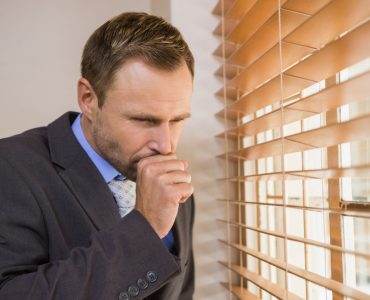An extreme or irrational fear of an object, animal, place or situation is called a phobia. A phobia may cause anxiousness or panic. Generally phobias do not affect the normal life of a person. Phobias like agoraphobia and social phobia may cause difficulty in leading a normal life. There are two types of phobia.
Simple phobia
In this condition a single object, activity or situation is the cause of phobia. Fear of snakes, insects, flies are some of the common examples of this kind of phobia. A person suffering from simple phobia might react with mild anxiety and panic when confronted with the source of fear.
Complex Phobia
Agoraphobia is a complex phobia which involves several anxieties including fear of travelling in buses, trains and fear of crowd .Social phobia is also a complex phobia where a person has fear of embarrassing themselves in the public. In such condition the thought of appearing in public and social events causes extreme anxiousness and fright. Around 1 to 2% of men and women have social phobia. This is generally due to fear of criticism and low self esteem.
Symptoms of phobias
Some physical symptoms of phobia caused by panic includes the following
-shaking
-dry mouth
-intense sweating
-rapid heart beat
-feeling confused and disorientated
-feeling sick
-difficulty in breathing
-chest pain
-dizziness
In extreme cases the following symptoms appear
-a fear of fainting
-a fear of losing control
-a fear of dying
The symptoms of social phobia include the following
-blushing
-trembling
-urgent need to visit the toilet
Causes of phobias
A frightening event or situation may lead to phobia and generally develops in late childhood, adolescence or at an early stage of adulthood. The cause of phobia is not always clear. A simple phobia may be the result of an early experience. A child may develop claustrophobia when he grows up if he is trapped in a confined and enclosed place.Certain phobia like fear from spider run in families. Social phobias may develop due to an intense experience in a social situation.
Treatment
Different treatments are available for phobias like talking treatments that include psychotherapy, councelling and cognitive behavioural therapy.
Talking treatments
-Counselling is generally a weekly session where the specific problem is dealt.
-Psychotherapy is an in depth process where focus is on finding the root cause. It also deals with finding the ways to cope with the problem.
-Cognitive behavioural therapy deals with the phobia by practical ways by exploring the thoughts, feelings and linked behaviour.
Desensitization, which is a form of behaviour therapy, is another method to treat simple phobias. In this process the therapist exposes the person suffering from phobia to the situation or object of fear very slowly. The person becomes less anxious with time. A combination of cognitive behaviour therapy and antidepressants is used for the treatment of social phobia. Medicines are used for short term but it is always better to use other techniques such as talking therapy. Antidepressants, beta-blockers and tranquillisers are the three types of medicines used to treat anxiety.












